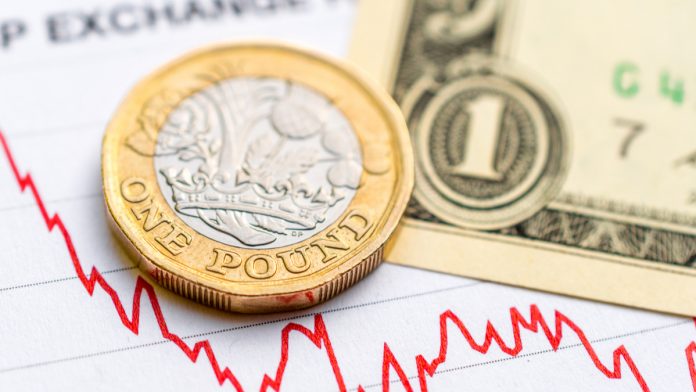The pound climbed over US$1.32 as Eurosceptic and pro-Brexit European Research Group (ERG) leader Jacob Rees—Mogg agreed to support Prime Minister Theresa May’s Brexit deal. The pound US dollar exchange rate rallied to a high of US$1.3262 before closing flat at US$1.3210. The exchange rate is drifting lower in early trade today.
| What do these figures mean? |
|---|
| When measuring the value of a pair of currencies, one set equals 1 unit and the other shows the current equivalent. As the market moves, the amount will vary from minute to minute.For example, it could be written:1 GBP = 1.28934 USDHere, £1 is equivalent to approximately $1.29. This specifically measures the pound’s worth against the dollar. If the US dollar amount increases in this pairing, it’s positive for the pound. Or, if you were looking at it the other way around:1 USD = 0.77786 GBPIn this example, $1 is equivalent to approximately £0.78. This measures the US dollar’s worth versus the British pound. If the sterling number gets larger, it’s good news for the dollar. |
The ERG has publicly criticised Theresa May’s Brexit deal at every opportunity. They are the Eurosceptic group of Conservative ministers whose support is needed in order to push Theresa May’s deal through Parliament. Up until now, they have voted against the deal. News that the leader Jacob Rees—Mogg is publicly supporting the deal was a not expected. Theresa May’s strategy of threatening a long delay to Brexit if her deal isn’t agreed to, appears to have worked. Jacob Rees—Mogg accepts that it is Theresa May’s deal or potentially no Brexit.
Jacob Rees—Mogg will bring the support of some other Eurosceptics. However, there are still more that need to be convinced. It is still doubtful whether Theresa May can get the numbers for her deal to make it through Parliament. There are reports that she will need to offer her resignation to push the deal through.
Today Parliament will hold indicative votes on Brexit options other than Theresa May’s Brexit deal. It is an attempt to break the impasse in Parliament over Theresa May’s deal. Parliament is looking to find if there is consensus for a different way forward. Voting will begin on Wednesday and finish on Monday. There are a wide range of options to start, which will be whittled down by Monday. Signs that a softer Brexit or no Brexit is leading could boost the pound.
| Why is a “soft” Brexit better for sterling than a “hard” Brexit? |
|---|
| A soft Brexit implies anything less than UK’s complete withdrawal from the EU. For example, it could mean the UK retains some form of membership to the European Union single market in exchange for some free movement of people, i.e. immigration. This is considered more positive than a “hard” Brexit, which is a full severance from the EU. The reason “soft” is considered more pound-friendly is because the economic impact would be lower. If there is less negative impact on the economy, foreign investors will continue to invest in the UK. As investment requires local currency, this increased demand for the pound then boosts its value. |
US Consumer Confidence Falls Again
The dollar slipped versus the pound after US consumer confidence unexpectedly declined in March, its second consecutive monthly decline. When consumer morale weakens, consumers tend to spend less, meaning that this is bad news for the US economy.
Adding to the weak picture US home building also fell by more than expected in February offering further evidence of a slowdown in economic activity. Slowing global growth concerns, ongoing trade dispute and Brexit are all weighing on the US economy and are supportive of the Fed’s patient approach. Interest rates are unlikely to rise soon.
| Why do raised interest rates boost a currency’s value? |
|---|
| Interest rates are key to understanding exchange rate movements. Those who have large sums of money to invest want the highest return on their investments. Higher interest rate environments tend to offer higher yields. So, if the interest rate or at least the interest rate expectation of a country is relatively higher compared to another, then it attracts more foreign capital investment. Large corporations and investors need local currency to invest. More local currency used then boosts the demand of that currency, pushing the value higher. |
Dollar investors will now look towards the end of the week with GDP reading due on Thursday and inflation figures set for release on Friday.
This publication is provided for general information purposes only and is not intended to cover every aspect of the topics with which it deals. It is not intended to amount to advice on which you should rely. You must obtain professional or specialist advice before taking, or refraining from, any action on the basis of the content in this publication. The information in this publication does not constitute legal, tax or other professional advice from TransferWise Inc., Currency Live or its affiliates. Prior results do not guarantee a similar outcome. We make no representations, warranties or guarantees, whether express or implied, that the content in the publication is accurate, complete or up to date. Consult our risk warning page for more details.
This article was initially published on TransferWise.com from the same author. The content at Currency Live is the sole opinion of the authors and in no way reflects the views of TransferWise Inc.





